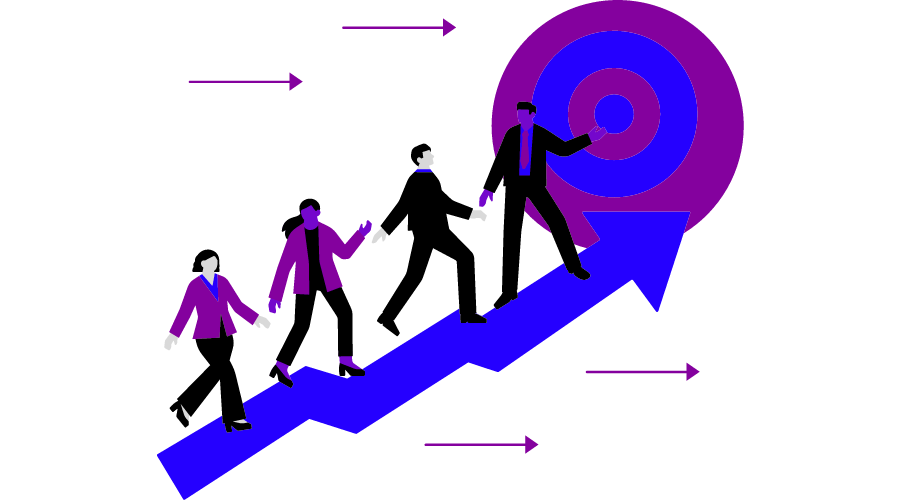
In a fast-paced world, individuals and organizations constantly face the need to adapt, innovate, and strive for excellence. Continuous improvement is the key to success, guiding us to progress in our pursuits constantly.
Imagine a canvas that represents never-ending innovation. Each stroke we make on this canvas is an opportunity to improve our processes, refine our skills, and surpass expectations. Continuous improvement encourages us to challenge how things are done, inviting fresh ideas and perspectives.
Within this canvas, creativity plays a vital role. It allows us to find new possibilities and infuse our efforts with vitality and freshness. Creativity is the spark that breathes life into our work.
Yet, professionalism is equally important. It provides the structure and discipline to ensure our efforts are focused and effective. We can achieve excellence in our endeavors by adhering to best practices and established methods.
Welcome to this discussion on continuous improvement, where we aim to find the perfect blend of warmth, creativity, professionalism, and simplicity.
What Is Continuous Improvement?
Continuous improvement definition:
Continuous improvement, also known as continuous process improvement or continuous quality improvement, refers to an ongoing effort to enhance products, services, processes, or systems incrementally over time.
It is a philosophy and approach that encourages individuals, teams, and organizations to strive for excellence by identifying, analyzing, and implementing changes to achieve better outcomes.
Continuous Improvement Process
Assessing Your Current State
This involves analyzing the existing processes, procedures, and performance metrics to determine the areas that need improvement. It may include gathering data, conducting interviews, or observing operations to understand the current situation comprehensively.
Identifying the Root Cause of Problems
Once you have assessed the current state, the next step is identifying the underlying causes of any problems or inefficiencies. This can be done through techniques like root cause analysis, process mapping, or data analysis to pinpoint the factors contributing to the issues.
Developing a Solution
Based on the identified root causes, you can brainstorm and develop potential solutions or improvement ideas. It’s important to involve relevant stakeholders and subject matter experts in this stage to ensure a comprehensive approach.
Implementing a Solution
Once a solution has been selected, it must be implemented. This may involve planning the implementation, assigning responsibilities, allocating resources, and communicating the changes to the relevant teams or individuals.
Evaluating the Results
After the solution has been implemented, evaluating its effectiveness is crucial. You can measure key performance indicators (KPIs), conduct tests or experiments, or collect stakeholder feedback. The evaluation helps determine whether the solution addressed the root causes and brought the desired improvements.
Standardizing the Process
If the implemented solution proves successful, it’s important to standardize the improved process. This involves documenting the revised procedures, updating relevant policies or guidelines, and providing training or guidance to follow the improved process consistently.
Benefits of Continuous Improvement
- Enhanced efficiency and productivity
- Improvement in employee engagement and relationship
- Cost savings
- Reduced waste and cycle time
- Improvement in customer satisfaction
- Agility and adaptability to changes in the market, customer demands, and technological advancements.
Tools and Techniques for Continuous Improvement
Use these tools and techniques for making your continuous improvement process smoother.
Root Cause Analysis (RCA) is a tool used for identifying the underlying causes or factors contributing to an issue, problem, or event. By addressing the root causes, organizations can implement more effective solutions and prevent the recurrence of similar problems.
The 5 Whys technique asks “why” repeatedly to identify the root cause of a problem. Organizations can implement more effective and long-lasting solutions by addressing the underlying cause instead of the symptoms.
Pareto Analysis is also called the 80/20 rule. It helps prioritize improvement efforts by identifying the most significant factors contributing to a problem. It involves focusing on the vital few factors that have the greatest impact.
Value Stream Mapping visually represents the steps involved in delivering a product or service. It helps identify bottlenecks, waste, and areas for improvement within the value stream, enabling organizations to optimize processes.
A Fishbone Diagram or the Ishikawa diagram is a visual tool used to find and analyze the potential causes of a problem. It organizes possible causes into categories (such as people, processes, equipment, and materials) to facilitate problem-solving and improvement.
Examples of Continuous Improvement
Here are some examples of continuous improvement practices:
Ideation and Think Tanks
Encouraging employees to generate ideas and solutions to improve or create new processes. Companies often organize brainstorming sessions, innovation workshops, or “think tanks” to foster creativity and gather diverse perspectives.
Monthly Training
Providing regular training sessions for employees to enhance their skills and knowledge and understand their roles and responsibilities. These training sessions can focus on specific topics such as new technologies, industry trends, or customer service.
Catchball
Catchball is a collaborative communication process that involves sharing ideas, goals, and strategies across different organizational levels and departments. It allows for input, feedback, and refinement of ideas as they are passed back and forth, ensuring alignment and consensus before implementation.
FAQs
The Continuous Improvement Model, also known as the Plan-Do-Check-Act (PDCA) cycle or Deming cycle, was developed by Dr. W. Edwards Deming. Dr. Deming was an American statistician, engineer, and management consultant widely regarded as the pioneer of modern quality management and continuous improvement methodologies.
While various frameworks and methodologies for continuous improvement exist, four common principles are often emphasized. These principles are:
- Understanding of customer needs and expectations.
- Analyzing and improving processes rather than relying solely on ad-hoc fixes.
- Data-Driven Decision Making
- Active participation and engagement of employees at all levels of the organization.
The three methods of continuous improvement are:
- PDCA (Plan-Do-Check-Act)
- Lean Six Sigma
- Kaizen
